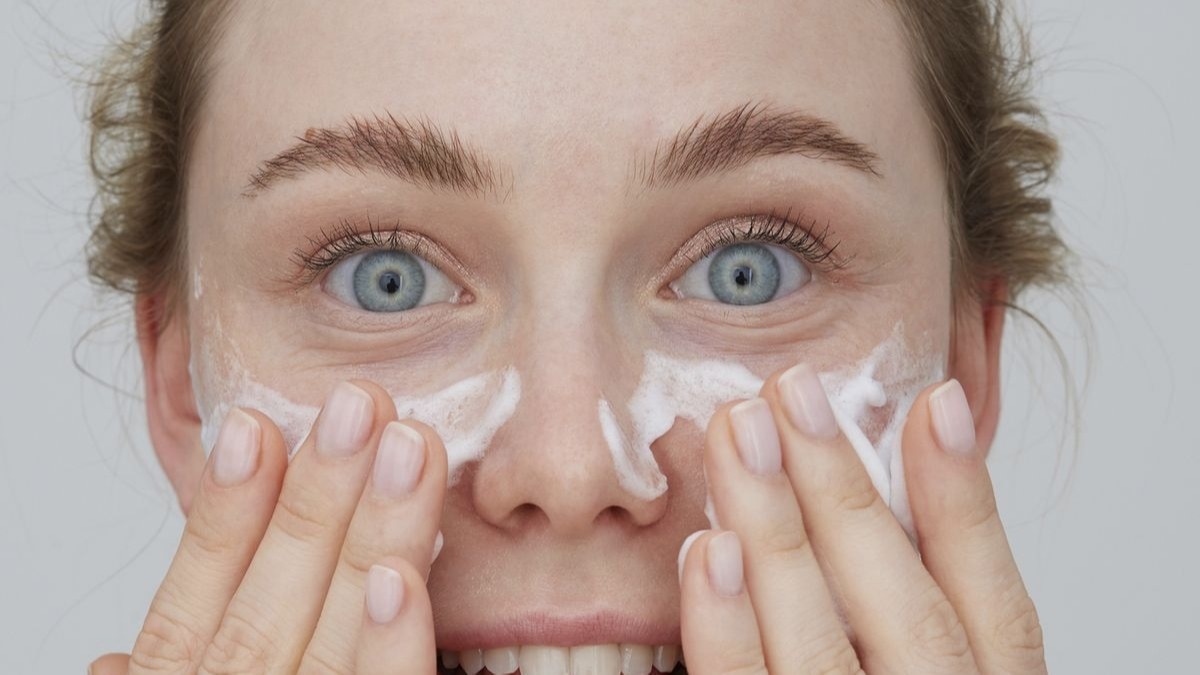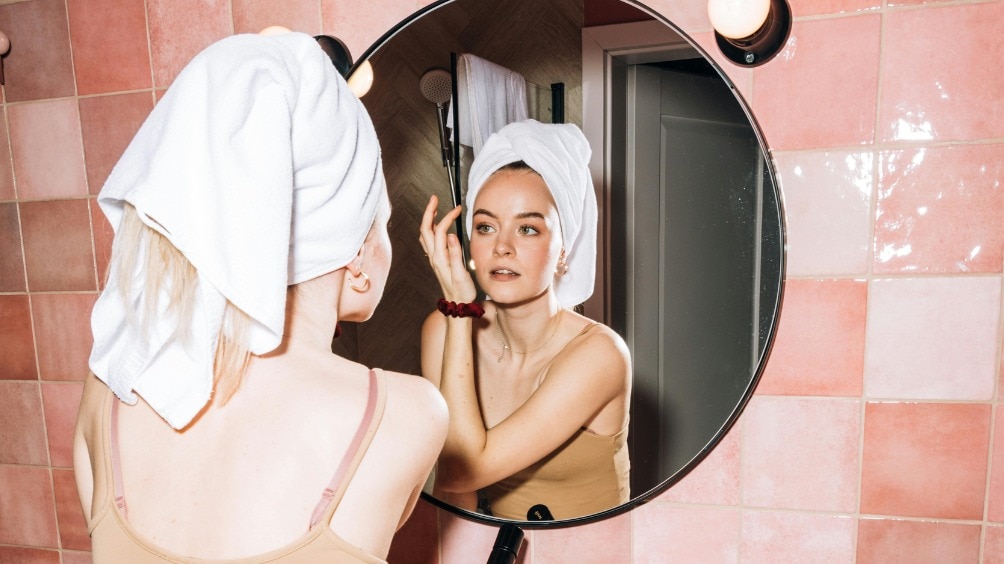Here’s exactly how to get rid of under-eye bags
We asked top dermatologists for their expert tips.


The eye area can be affected by several common skin concerns, and under-eye bags are among the most difficult to deal with. Experts say the best method for lasting results depends on how the issue developed in the first place. But what separates a true under-eye bag from standard puffiness? “Under-eye bags are an outpouching of skin involving the lower eyelid,” board-certified dermatologist Heather Woolery-Lloyd tells Bazaar. And if your bags don’t just disappear after a good night’s sleep, the gradual ageing of your skin is likely to blame.
“The eye sits in a fat pad, and that fat pad is held in place by fibrous tissue,” Woolery-Lloyd says. “As we age, the fibrous tissue that holds the fat pad in place can weaken, and the fat in the lower eyelid can bulge forward. This is called prolapse of orbital fat.” But here’s some encouraging news: No matter the source of your swollen under-eyes, there are products to use, actions to take, and lifestyle changes that can be implemented to help get rid of the bags under your eyes—or at the very least, minimise their appearance.
We’ve consulted top dermatologists for a deeper dive into some of the causes of under-eye bags, plus their recommendations on treatments that soothe, de-puff, and generally smooth the delicate orbital area.
What causes under-eye bags?
As previously mentioned, ageing is the most common cause of under-eye bags. “The natural ageing process leads to the loss of collagen and elasticity in the skin,” says Stefani Kappel, board-certified dermatologist and founder of skincare brand MDAiRE. “As collagen diminishes, the delicate skin around the eyes weakens, making under-eye bags more noticeable.” Kappel adds that a person’s anatomy or genetic predisposition, thin skin, fluid retention from dietary habits, dehydration, allergies, smoking, and lack of sleep can also contribute to drooping under-eyes.
At what age do under-eye bags appear?
While puffy under-eyes can pop up in your 20s, Kappel says the concern is more prominent once you reach your 30s, 40s, and older. “Our dermis, epidermis, and subcutaneous tissue thin over time, which can make these under-eye bags look more pronounced. This is all heavily influenced by personal anatomy, genetic predisposition, and lifestyle,” she notes. However, strategic skincare habits may help reduce the issue, which makes the case for regularly using an eye cream or set of patches (more on that later).
Can you get rid of under-eye bags?
Though it’s possible to get rid of under-eye bags, that’s not always as simple as tapping on an eye cream with your ring finger twice a day. Depending on the severity of the issue and its cause, a more invasive approach to address your under-eyes may be needed. “Once the bags develop, it’s challenging to remove them unless planning for in-office or surgical procedures,” says Teresa Song, board-certified dermatologist at Marmur Medical in New York City. The most ideal scenario is to take steps to help prevent them from forming.
Implement healthy lifestyle changes
Getting enough shut-eye and drinking water aren’t solutions to every beauty problem, but they definitely don’t hurt. In fact, Kappel says that sufficient rest and proper hydration with regular exercise “can help minimise fluid retention in that area and promote overall healthier skin.” Essentially, if buying a Stanley Cup and a silk pillowcase is the motivation you need to implement healthier habits, go for it.
Invest in an eye cream with hydrating, tightening, or brightening benefits
Consider this your sign to add an eye cream to your daily skincare lineup. The step can make a big difference in minimising the appearance of under-eye bags. Song says to look for creams with ingredients like retinol, peptides, caffeine, along with antioxidants, like vitamin C and green tea. She points to La Roche-Posay Pigmentclar Dark Circles Eye Cream, as it “contains caffeine to brighten the under-eye, retinol to stimulate collagen, and comes with a metal applicator that’s great for gentle massage.”
Song also suggests trying the MMSkincare Bright and Tight Retinol Eye Cream, a hydrating option that uses retinol to improve skin texture while boosting collagen production. And if you’re looking for a gentle option that layers well under concealer, reach for one of board-certified dermatologist Michelle Henry’s favorites: Kiehl’s Avocado Eye Cream. “It’s super hydrating, and it helps to plump up the thin skin underneath the eyes,” she says.
Reduce swelling with soothing under-eye patches
Under-eye patches are useful for catching eyeshadow fallout and temporarily reducing swelling and puffiness around the eye region. Kavita Mariwalla, a board-certified dermatologist, recommends Wander Beauty’s Baggage Claim Eye Masks. “These work temporarily but are fabulous for a night out or big meeting. Apply for 30 minutes, and the appearance of the eye bags really do improve.”
Song recommends the Drmtlgy Brightening Eye Masks, which contain de-puffing caffeine, niacinamide, and hyaluronic acid, plus aloe and cucumber to help soothe the skin. Bazaar editors also love the Hero Cosmetics Mighty Patch for Tired Eyes. The cooling, spa-style patches help de-puff the skin under your eyes and turn clear when it’s time to take them off.
Talk to your doctor about surgical treatments and in-office procedures
Topical skincare products can do only so much when it comes to erasing puffy under-eye bags. For long-lasting, significant improvements, your doctor may instead recommend in-office procedures and certain surgical solutions.
“To be honest, fat pad herniation is best approached surgically,” Mariwalla confirms. “In the past, this surgery was much more invasive and intense than it is now. I explain to my patients that if you have this genetically, it isn’t ever going to go away, so surgery is something you can appreciate and benefit from for years and years.”
Feature image credits: WESTEND61//GETTY IMAGES
this article originally appeared in harper'sbazaar.com/uk in March 2024
Also Read: Are you exfoliating your skin too often?










